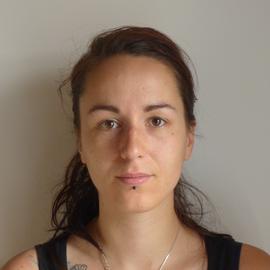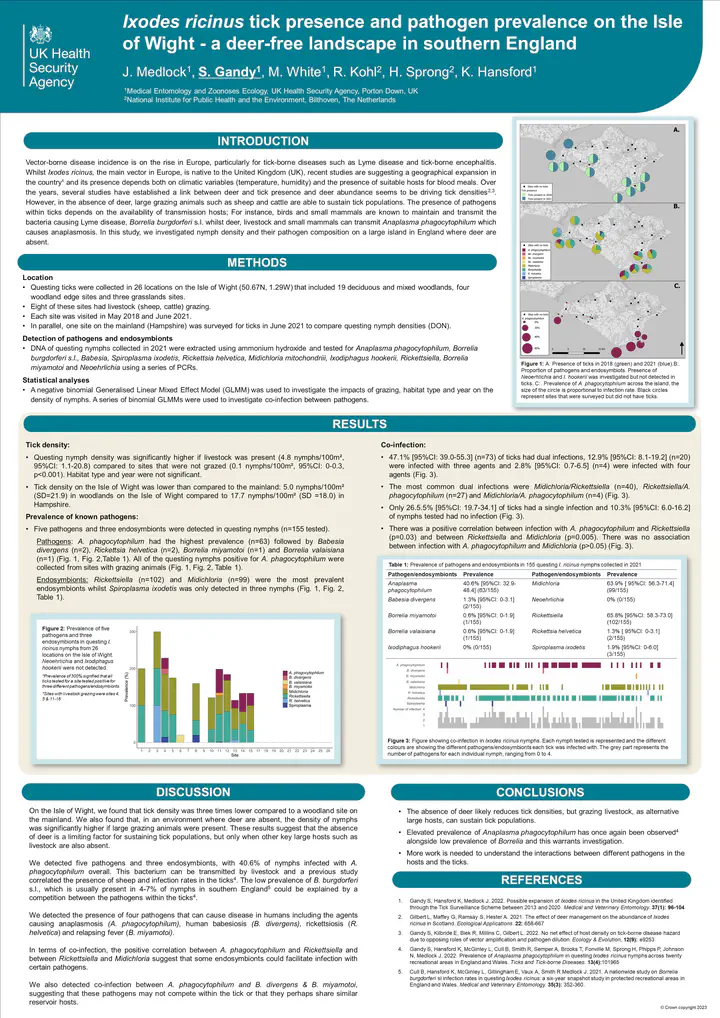Abstract
Tick-borne disease incidence is predicted to increase over the next decade so it’s important to understand drivers of tick density and pathogen prevalence. Deer are important reproduction hosts for ticks and are known to drive their abundance. Thus, the aim of this study was to investigate tick density and pathogen prevalence in an island where deer are absent. Questing nymphs (n=155) were collected in 2018 and 2021 at 26 sites on the Isle of Wight and were tested for a range of pathogens and endosymbionts. Questing nymph density was significantly higher in sites were livestock grazed, indicating that cattle and sheep could drive tick abundance in the absence of deer. Anaplasma phagocytophilum was detected in 40.6% of questing nymphs, Babesia divergens & Rickettsia helvetica in 1.3% and Borrelia valaisiana & Borrelia miyamotoi in 0.6% of questing nymphs. Rickettsiella (65.8%), Midichloria (63.9%) and Spiroplasma ixodetis (1.3%) were also detected.
Date
Dec 11, 2023 11:00 AM — Dec 15, 2023 5:00 PM
Location
Belfast ICC
Belfast,

Research Associate
My research primarily focuses on understanding the ecological drivers of tick-borne diseases to provide insights on the mechanisms involved in transmission cycles, especially on the interactions between ticks, hosts and pathogens. My research includes investigating the impacts of environmental changes (woodland restoration, rewilding) and host community composition (deer, rodent and birds) on tick-borne diseases risks in the UK. Some of my findings uncovered an opposing effect of deer densities on Lyme disease hazard through their positive effects on tick density and negative effects on infection prevalence. I also published work looking at spatiotemporal changes in tick distribution using passive surveillance data and I have been leading the National Tick Survey, which involves collaborating with stakeholders in thirty National Parks and recreational areas to collect ticks and test them for various tick-transmitted pathogens between 2021 and 2024. The goal is to understand disease hazard and temporal variation in areas visited by members of the public and deliver tick awareness messages.
